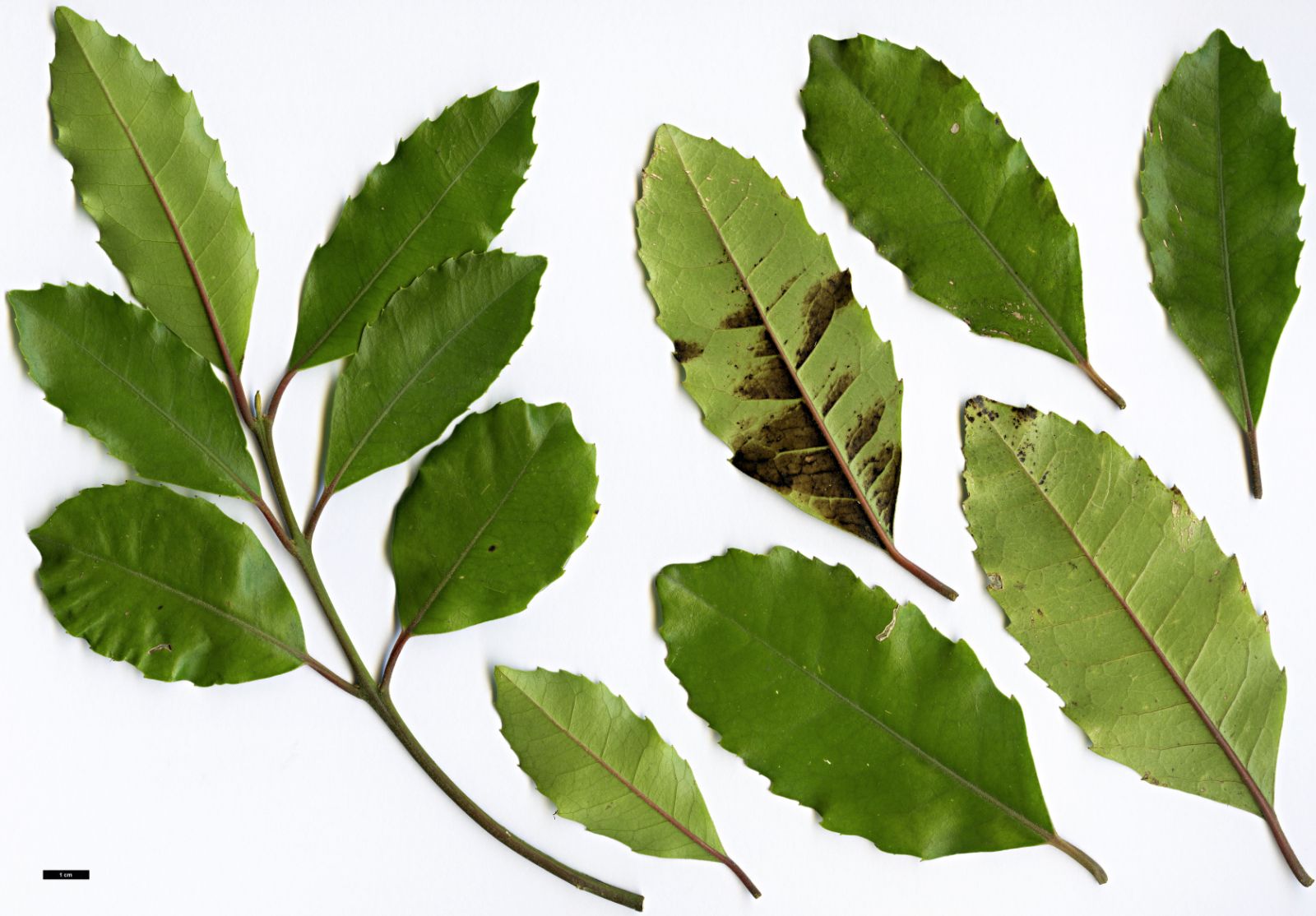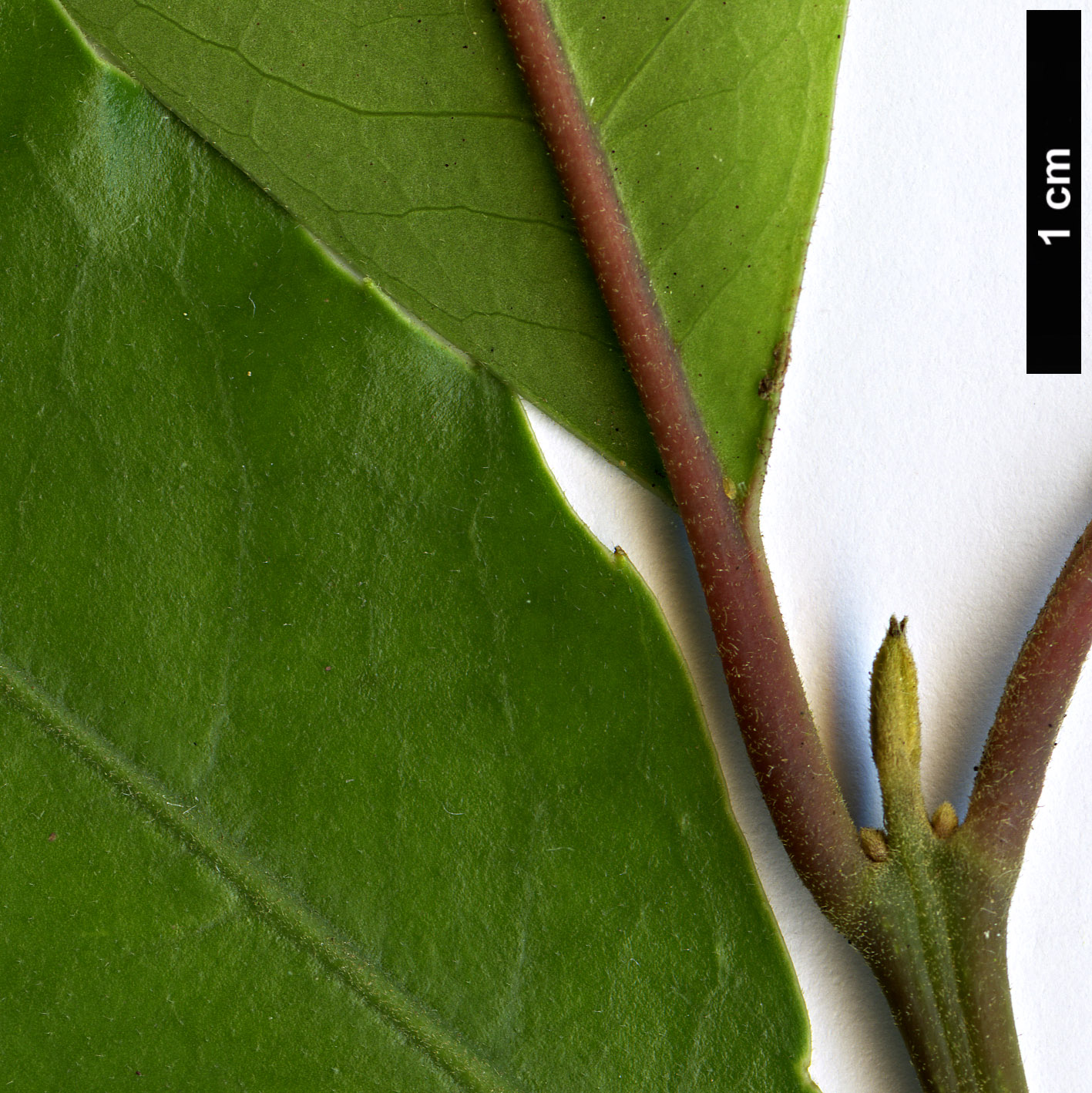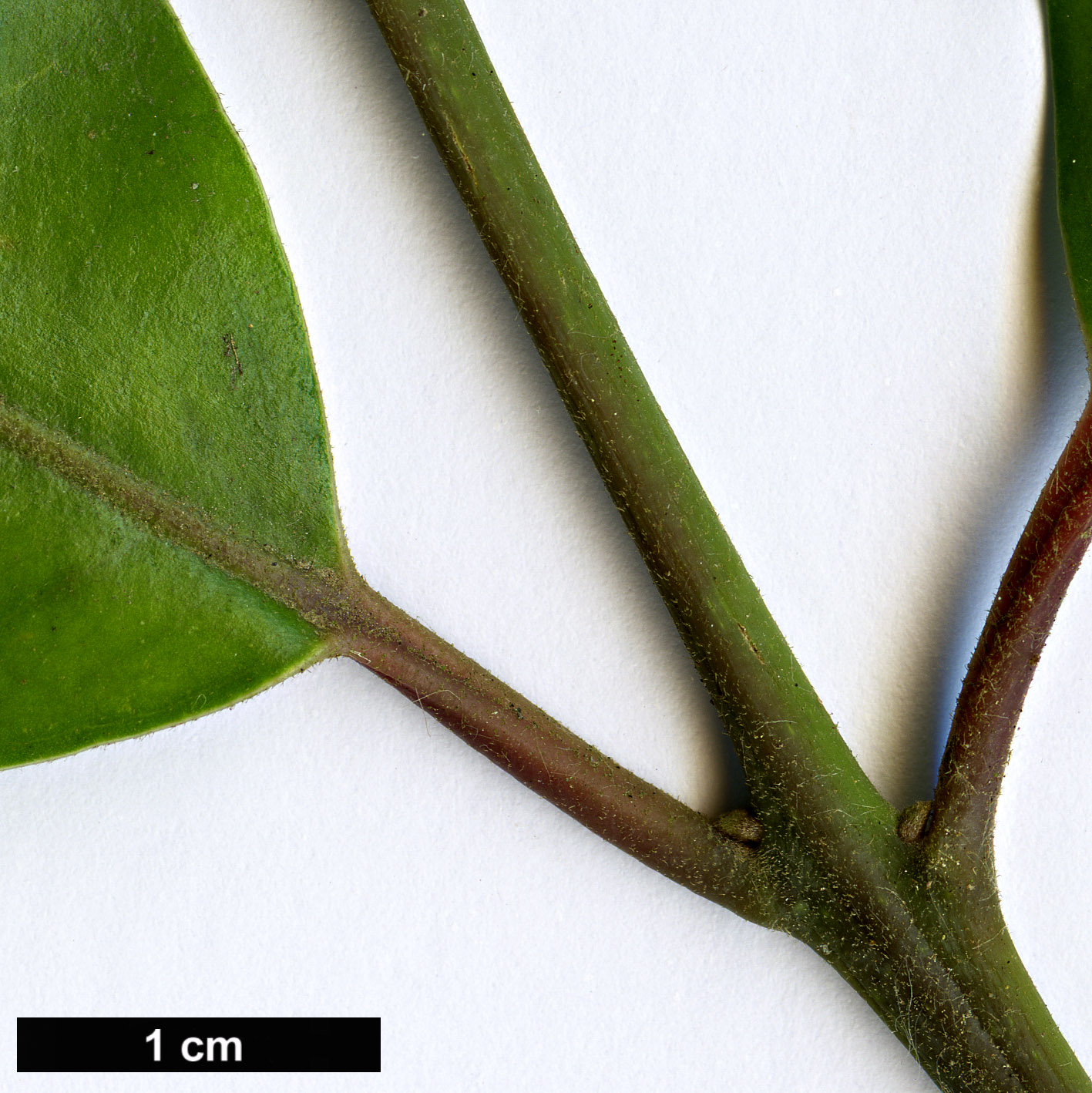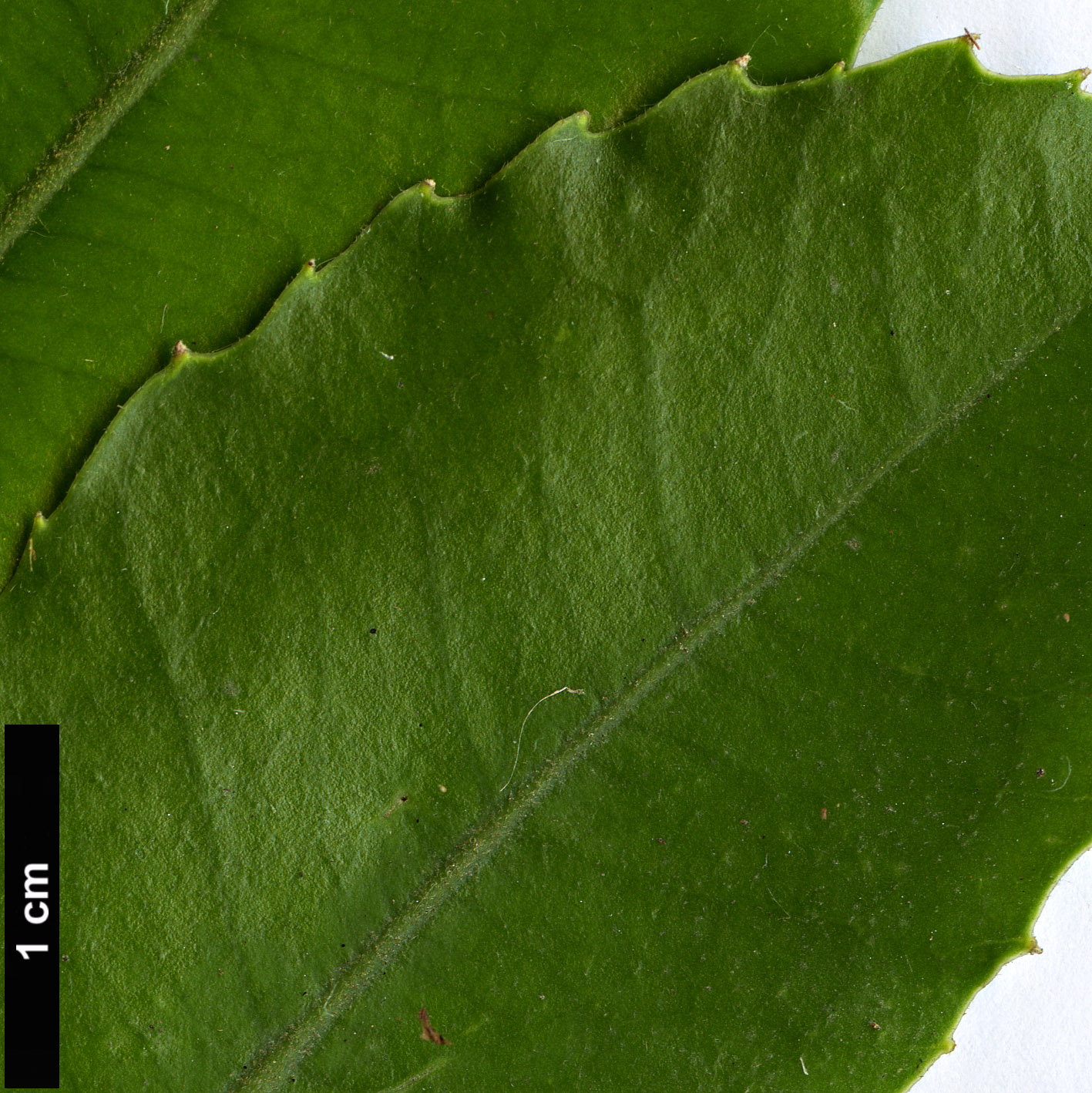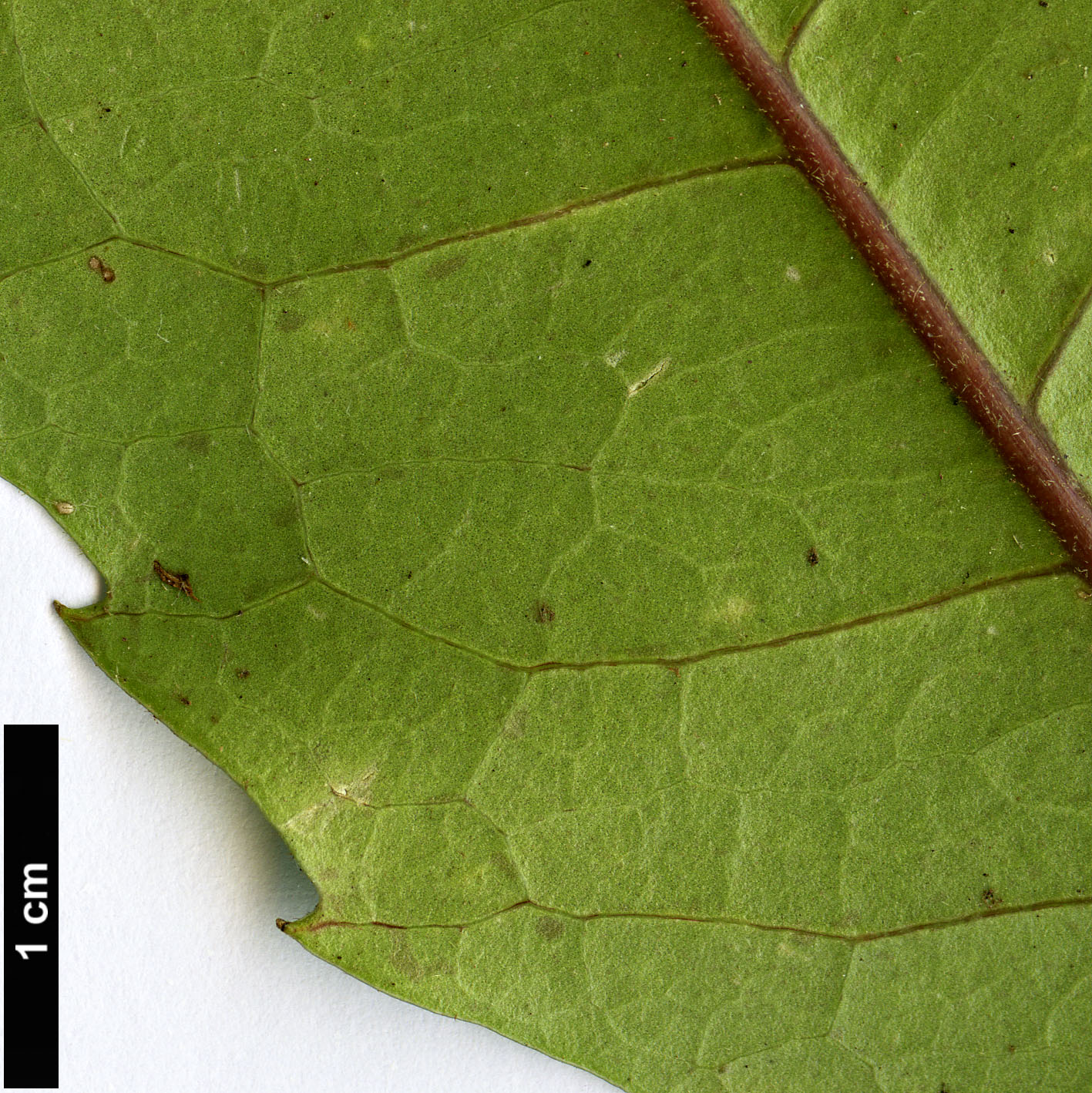Hedycarya arborea
Credits
Article from New Trees by John Grimshaw & Ross Bayton
Recommended citation
'Hedycarya arborea' from the website Trees and Shrubs Online (treesandshrubsonline.
Genus
Common Names
- Pigeonwood
- Poraikaiwihiri
Other taxa in genus
Shrub or small tree to 12 m, multistemmed. Branchlets pubescent or almost glabrous. Leaves evergreen, opposite or subopposite, leathery and aromatic, (5–)8–11.5 × (2–)3–5.5 cm, elliptic, both surfaces pubescent, particularly when young, midrib prominent below, six to eight secondary veins on each side of the midrib, margins dentate with 6–11 teeth, apex apiculate; petiole 0.8–1.2 cm long and pubescent. Inflorescences axillary, paniculate, 3–4 cm long and with 3–20 flowers. Staminate flowers ~0.7 cm diameter with 15–20 stamens; pistillate flowers ~0.4 cm diameter with 10–20 carpels. Ripe carpels solitary and drupe-like, bright orange-red. Flowering October, fruiting April (New Zealand). Jérémie 1978. Distribution NEW ZEALAND: North Is., South Is. as far south as the Banks Peninsula. Habitat Lowland and montane forest. USDA Hardiness Zone 9. Conservation status Not evaluated. Illustration Jérémie 1978; NT389.
Forming a stocky small or medium-sized tree, Hedycarya arborea is known as Pigeonwood on account of its fruits, that attract large numbers of pigeons when ripe. The birds gorge on the orange fruits, becoming rather drowsy in the process (Salmon 1996). It is considered useful in New Zealand horticulture for its dense canopy of glossy dark green leaves, amongst which the pale green flowers are rather inconspicuous. The new shoots are bright fresh green, but rather frost-sensitive, so the tree should be sited in a sheltered position where spring frosts are rare. Rich deep soil is recommended (Metcalf 2000). A specimen has been growing steadily at Tregrehan since 1994 and now flowers, and it is also in cultivation at the San Francisco Botanical Garden.

